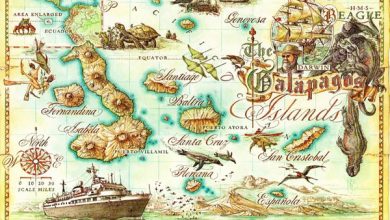Narongoro Ditch History.
Narongoro Ditch, located in Tanzania, is a significant archaeological site that dates back to prehistoric times. It offers valuable insights into early human settlements and activities.
Narongoro Ditch holds a crucial place in Tanzania’s history. This archaeological site provides a window into prehistoric human life and activities. Researchers have uncovered tools, pottery, and fossils that suggest a thriving community. The ditch, formed naturally, served as a protective barrier and a water source.
Today, it attracts historians and tourists alike. The findings contribute to understanding human evolution and ancient cultures. Narongoro Ditch remains a key site for studies in archaeology and anthropology. Its preservation helps us appreciate and learn from our ancient past.
Ancient Origins
The Narongoro Ditch holds a wealth of history. Its ancient origins reveal a story of early human activity and natural formations. This section will delve into the past, exploring the early inhabitants and the formation of the ditch.
Early Inhabitants
The Narongoro Ditch was home to early human settlers. Archaeologists have found tools and artifacts that date back thousands of years. These items show that ancient people lived and thrived here.
Evidence suggests these early inhabitants were hunters and gatherers. They depended on the rich resources of the land. The ditch provided water, food, and shelter.
Researchers have also uncovered cave paintings in the area. These paintings depict scenes of daily life and wildlife. They offer a glimpse into the lives of these early people.
Formation Of The Ditch
The Narongoro Ditch formed through natural geological processes. Experts believe it took millions of years for the ditch to form. The area experienced significant volcanic activity and erosion.
Volcanic eruptions created layers of ash and lava. Over time, these layers hardened and formed the landscape. Erosion from wind and water then carved out the ditch.
The ditch’s unique shape and size are due to these natural forces. It is an impressive testament to the power of nature.
Today, the Narongoro Ditch stands as a natural wonder. It continues to attract researchers and tourists alike.
Colonial Era
The Colonial Era brought big changes to Narongoro Ditch. This period saw European powers influencing the region. These changes had lasting effects on local communities.
European Influence
European explorers arrived in the 19th century. They were curious about the African landscape. They mapped the area and documented its resources.
Soon, European powers claimed territories. They wanted to control trade routes and natural resources. This led to the establishment of colonies.
The Europeans built infrastructure. They constructed roads and railways. This made it easier to transport goods.
European influence also brought new laws. These laws often favored the colonizers. Local traditions were sometimes ignored.
Impact On Local Communities
Colonial rule changed life for local communities. People had to adapt to new systems. Traditional ways of living were disrupted.
Many locals were forced to work in mines. They had to extract valuable minerals. These minerals were sent to Europe.
Local leaders lost power. European officials took control of governance. This led to the decline of traditional authority.
Education systems changed too. Schools taught European languages and customs. This replaced many local traditions.
| Aspect | European Influence | Impact on Locals |
|---|---|---|
| Infrastructure | Roads and railways built | Improved transport but disrupted local life |
| Governance | European laws imposed | Traditional leaders lost power |
| Economy | Control over natural resources | Locals forced into labor |
| Education | European languages taught | Local customs sidelined |
Modern Developments
The Narongoro Ditch has seen many changes over the years. Modern developments have played a crucial role in preserving its history. These changes have also helped in making it accessible to more people.
Technological Advancements
Technology has greatly impacted the Narongoro Ditch. Drones are now used to study the area. They provide detailed images and data. This helps scientists understand the ditch better.
GPS technology is also used. It helps in mapping the entire area accurately. This information is then shared with researchers worldwide.
Interactive virtual tours are now available. People can explore the ditch from their homes. This has increased awareness and interest in the ditch.
Conservation Efforts
Efforts to conserve the Narongoro Ditch have increased. Many organizations are involved in these efforts. They focus on protecting the natural habitat and wildlife.
Local communities are also part of these efforts. They help in monitoring the area and reporting any issues. This has improved the overall conservation of the ditch.
A table showing some key conservation efforts:
| Effort | Organization | Impact |
|---|---|---|
| Wildlife Protection | Wildlife Trust | Increased animal population |
| Planting Trees | Green Earth | Reduced soil erosion |
| Community Education | Eco Warriors | Better local engagement |
Conservation efforts also include regular clean-ups. These help in keeping the area free from litter. Volunteers from all over the world participate in these clean-ups.
These modern developments have greatly benefited the Narongoro Ditch. They ensure that this historic site is preserved for future generations.
Cultural Significance
The Narongoro Ditch is more than a geological wonder. Its cultural significance spans generations. The ditch holds a deep connection to local tribes and their traditions. Let’s explore the myths, legends, tourism, and education surrounding this historic site.
Myths And Legends
Many myths surround the Narongoro Ditch. One legend speaks of a giant snake. The snake created the ditch by slithering through the land. Another tale tells of ancient gods. They used the ditch as a pathway to the underworld.
These stories pass from one generation to another. They keep the cultural heritage alive. Elders often share these tales around evening fires. The myths give the ditch a mystical aura.
Tourism And Education
The Narongoro Ditch attracts many tourists. They come to explore its beauty and history. Local guides offer tours and share fascinating stories.
Schools also arrange field trips to the ditch. These trips provide students with hands-on learning experiences. Children learn about geography, history, and culture. The ditch serves as an open-air classroom.
Tourism supports the local economy. It creates jobs and encourages cultural preservation. Educational trips foster a sense of pride in young minds.
Frequently Asked Questions
What Is The Narongoro Ditch?
The Narongoro Ditch is an ancient excavation in Africa.
Who Built The Narongoro Ditch?
The Narongoro Ditch was likely built by early African civilizations.
Why Is Narongoro Ditch Significant?
Narongoro Ditch is significant for its historical and archaeological insights.
How Old Is The Narongoro Ditch?
The Narongoro Ditch is estimated to be over 1,000 years old.
Conclusion
Discovering the history of Narongoro Ditch offers valuable insights into our past. This historical gem deserves preservation and appreciation. By understanding its significance, we honor those who came before us. Let’s continue to explore and protect such historical sites for future generations.
Dive deeper into history and keep learning.



